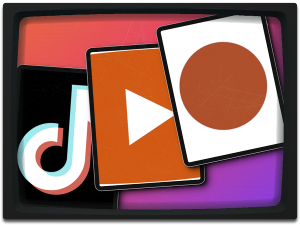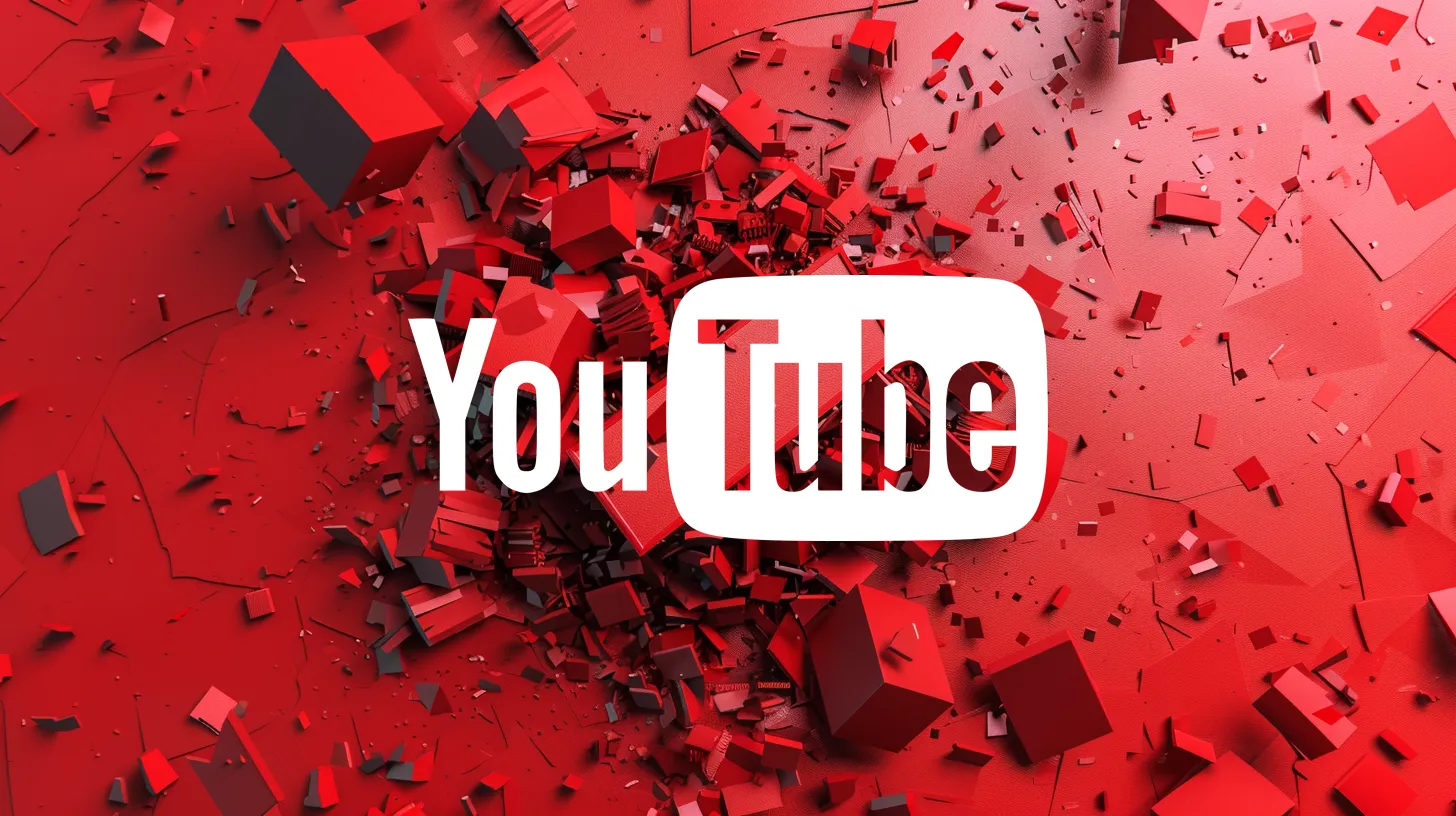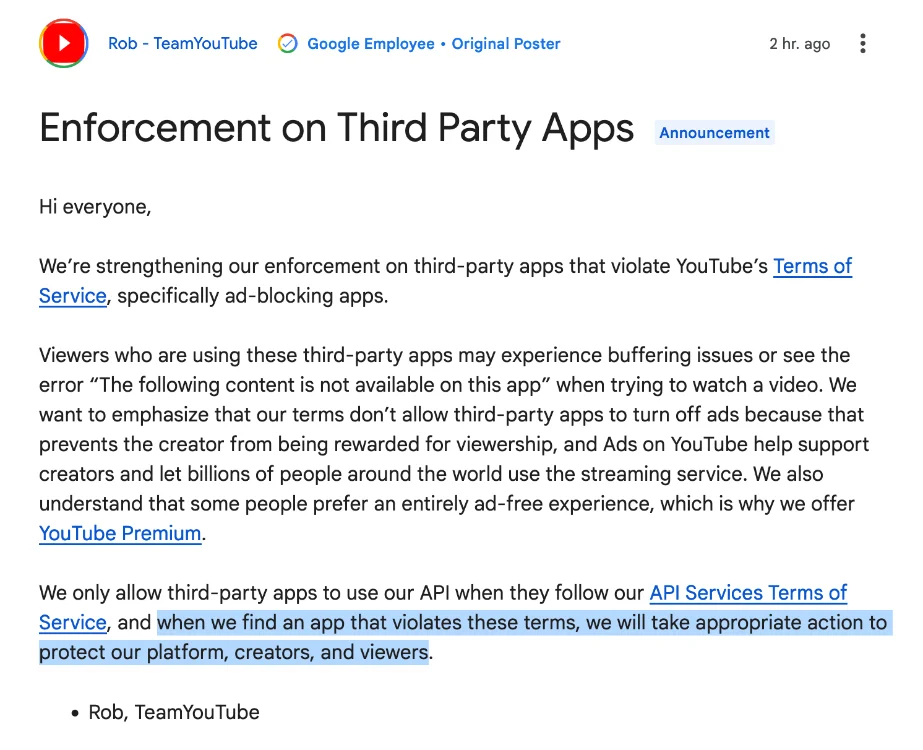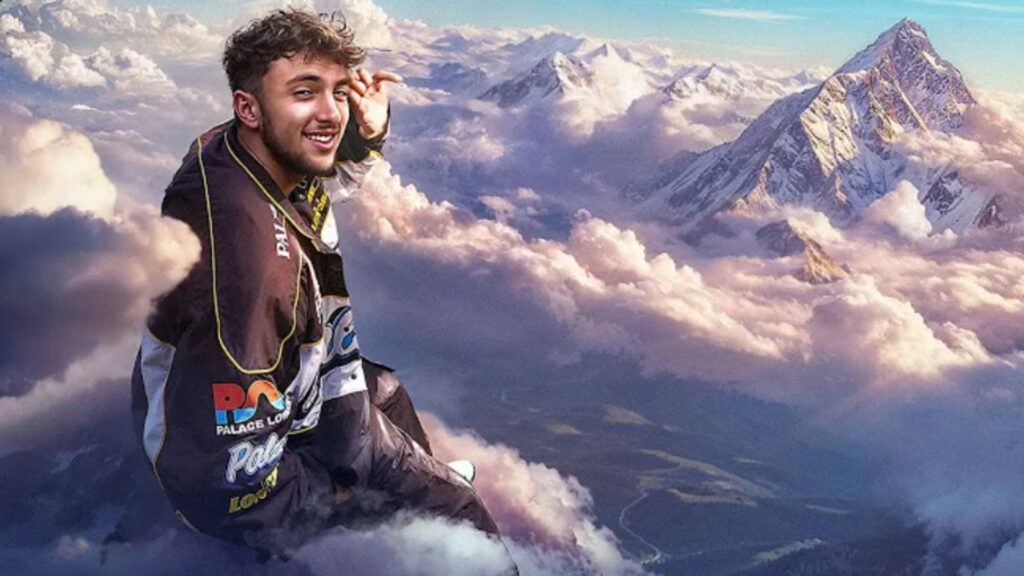-
 chevron_right
chevron_right
YouTube intensifie sa lutte contre les bloqueurs de publicités
news.movim.eu / JournalDuGeek · 3 days ago - 10:00

 chevron_right
chevron_right
YouTube intensifie sa lutte contre les bloqueurs de publicités
news.movim.eu / JournalDuGeek · 3 days ago - 10:00

Puss Plush: The Glow END
comics.movim.eu / RandoWis · 4 days ago - 11:13
Thank you for the successful campaign!
https://www.makeship.com/products/puss-plush-glow-in-the-dark
My sincere apologies that this animation took the past 5 months to finish!
I was hoping to complete and publish this by the end of December 2023 initially, but unfortunately things got out of hand (in terms of schedule and my ambitions for this project).
I’ll explain more in a future video/ RadioWis episode, but for now, please enjoy the video, and lookout for the Lu plush that’s releasing soon amongst other announcements!
The post Puss Plush: The Glow END first appeared on RandoWis .
 chevron_right
chevron_right
Arnaque au placement de produits : comment un YouTubeur a fait vendre du poison à des influenceurs ?
news.movim.eu / JournalDuGeek · 6 days ago - 13:27

Manga Publishers Grill YouTube & TikTok on Piracy and Content ID Restrictions
news.movim.eu / TorrentFreak · Tuesday, 16 April - 18:04 · 5 minutes
 During the 6th meeting of the Policy Subcommittee of the Copyright Subcommittee of the Cultural Affairs Council in Japan last month, representatives from Google and ByteDance were invited to give presentations on the topic of appropriate compensation.
During the 6th meeting of the Policy Subcommittee of the Copyright Subcommittee of the Cultural Affairs Council in Japan last month, representatives from Google and ByteDance were invited to give presentations on the topic of appropriate compensation.
As the meeting progressed, the topic sparked discussion on connected matters, sometimes with legal implications. Neither company had lawyers present but, with plenty of scope to challenge the video platforms on piracy issues, including how some manage to benefit more than others, there was no shortage of conversation.
Takeya Kito, Head of Music Content Partnership for YouTube in Japan, began with some background. Used in over 100 countries with support for 80 languages, YouTube’s platform grows at a rate of over 500 hours of uploaded content every minute.
More than 71 million people, including two-thirds of the adult population, use YouTube every month in Japan, with the streaming service committed to providing four freedoms to each and every one: Freedom of expression, freedom of access to information, freedom of opportunity, and freedom of participation.
Mr. Kito spoke of YouTube’s commitment to transparency, including via its Copyright Transparency Report. When working with music partners, rights holders and artists, YouTube provides reports detailing how their content is consumed. In some areas, however, YouTube would like to see more transparency from its business partners.
“In order for YouTube to obtain a correct understanding of the royalties received by rights holders, we believe it is important to ensure transparency between the labels and copyright management organizations with whom we do business and license our works, and the individual artists, performers and songwriters who come after them,” Mr. Kito explained.
“This is because, unfortunately, we have no way of knowing how the distribution is actually handled between the individual rights holders, performers, and songwriters, so it is important to ensure transparency in this area as well.”
Given Mr. Kito’s job title, it was perhaps inevitable that YouTube’s work with the music industry would dominate his presentation. Content ID, the content recognition / monetization system that currently handles over 99% of copyright claims and to date has returned $9 billion to rightsholders, mostly in the recording industry, received plenty of coverage.
The first question from those in attendance came from Mr. Ito, a representative of Authorized Books of Japan (ABJ), who thanked Mr. Kito for his presentation and then got right down to business.
“I found it very interesting to hear about how the music industry is successfully using Content ID in various ways. By the way, I belong to an organization called ABJ, and I work in anti-piracy measures at a publishing company [TF: Shueisha], and I’ve been using Content ID for about 14 years,” Mr. Ito explained.
“On YouTube, there are cases where publications, mainly still images of manga, are uploaded as videos like picture-story shows, or picture books, which are read aloud by users while turning the pages on their own. A large number of videos like this have been uploaded. Regarding Content ID, Content ID has no effect on illegal videos published by publishers, so publishers have to hire specialized companies or search on YouTube themselves to find infringing videos. I’m working on erasing them.”
Mr. Ito noted how representatives from the music industry spoke of being rewarded through Content ID, citing a “huge amount” of around $1.8 billion. But then, the inevitable; if the music industry has the ability to turn copyright claims into profit, what about everyone else?
“I strongly feel that publishers are not receiving any return from capturing pirated copies regarding Content ID. My first question is, what do you think about the situation where Content ID cannot be used to deal with pirated copies of publications?” Mr. Ito asked.
ABJ’s representative didn’t get the answer he was hoping for.
“Thank you very much,” YouTube’s representative responded. “As to your question, please understand that I am not in a position to answer it, as my role is limited to music partnerships in Japan.”
Mr. Ito accepted the position but still wasn’t quite done.
Representing TikTok at the meeting was Mr. Tomiji Kato, Senior Manager of Global Music Business Development & IP Rights at ByteDance Inc.
Mr. Kato’s presentation was very long but at one point he also touched on Content ID. TikTok doesn’t have a comparable system but the question here, it seems, is whether TikTok needs or even wants one. Something like that could be too restrictive for TikTok.
“At TikTok, we have not yet introduced a system like YouTube’s Content ID for original recordings, but what we need to consider is whether a system like Content ID is better, or whether we should have a pre-decided, all-inclusive contract like we are doing now with the labels,” Mr. Kato explained.
“By introducing a system or mechanism, we must not, for example, impair the creativity of music development or competition in music use, and so we must consider how the platforms and users can best use new music. We are considering how we can best contribute to new music use and development on the platform side and on the users’ side, and this is something that both the rights holders and the platforms should consider.”
When the presentation was opened up for questions, Mr. Ito of ABJ (and of publisher Shueisha) initially had considerable praise for TikTok; users of TikTok who introduce publishing content to their followers have a “ripple effect” and as a result, “there are many things to look forward to.”
Unfortunately, there are other things too, none of them good.
“For many years, I have been taking measures including on YouTube, and when it comes to video posting sites, YouTube has by far the most pirated copies, with the largest number of pirated copies being deleted in a month, around 20,000,” Mr. Ito said.
“However, starting around the summer, TikTok has finally overtaken YouTube, and now, depending on the month, TikTok has two to three times as many pirated copies being uploaded. We are also in serious trouble, and although the person in charge and the person at the anti-infringement company are deleting the information every day, the situation is not going away.”
Mr. Kato was then asked four questions: Is TikTok aware of so many pirated copies of publications, including manga? Does the company know that pirated copies often appear in recommendations? Does TikTok know that, when compared to YouTube, malicious accounts are less likely to be suspended? And finally, does TikTok appreciate how little copyright awareness is shown by its users?
“First of all, thank you for your positive comments,” said Mr. Kato. “I’m sorry, but I would like to refrain from answering any questions regarding pirated copies or takedowns, as this is outside of my scope of work.”
For those interested in how the discussion developed, the full minutes of the meeting ‘令和5年度第6回(2024年3月13日’ are available here (pdf). In summary, there might be a little more work to be done.
From: TF , for the latest news on copyright battles, piracy and more.
Contact publication
pubsub.blastersklan.com / slashdot · Tuesday, 16 April - 16:28 edit
YouTube has updated its policies to no longer allow "third-party apps to turn off ads." The Verge reports: This appears to target mobile ad blockers like AdGuard, which lets you open YouTube within the ad blocking app, where you'll get to view videos interruption-free. "We only allow third-party apps to use our API when they follow our API Services Terms of Service," YouTube says. "When we find an app that violates these terms, we will take appropriate action to protect our platform, creators, and viewers." To get around this, YouTube once again suggests signing up for the ad-free YouTube Premium.
Read more of this story at Slashdot.
YouTube's Ad Blocker Crackdown Now Includes Third-Party AppsLa guerre que mène YouTube contre les adblockers franchit un nouveau palier
news.movim.eu / Numerama · Tuesday, 16 April - 12:01

YouTube poursuit ses efforts pour contrer les outils bloquant les publicités. La plateforme annonce un durcissement de sa politique vis-à-vis de certaines applications tierces.
 chevron_right
chevron_right
Bloqueurs de pubs sur mobile – YouTube contre-attaque
news.movim.eu / Korben · Monday, 15 April - 21:32 · 1 minute

YouTube a encore frappé !
Bah oui parce que si vous pensiez échapper tranquillement aux pubs de la plateforme vidéo de Google sur votre smartphone grâce à votre petit bloqueur de pub préféré, et ben c’est raté. Ces derniers ont décidé de vous pourrir la vie si vous utilisez des applications tierces comme AdGuard ou uBlock Origin pour regarder vos vidéos sans ces satanées réclames.
Maintenant si vous essayez de passer à travers les mailles du filet publicitaire, vous risquez de vous retrouver avec des problèmes de lecture du genre la vidéo qui se met en pause toutes les 30 secondes pour charger ou carrément un message d’erreur qui vous envoie balader.
YouTube aurait lancé cette riposte parce que soi-disant, les créateurs de contenu méritent d’être rémunérés pour leur travail. C’est vrai, mais c’est surtout pour défendre leur énorme bout de gâteau. Perso, je m’en cogne un peu mais là où ça me gène, c’est qu’ils ont carrément menacé de sévir contre les applications qui ne respecteraient pas leurs conditions d’utilisation de l’API . Je vois pas ce qu’ils comptent faire exactement hormis couper l’accès à l’API… Mais je peur que ça aille plus loin comme faire sauter les comptes Github de uBlock, Freetube , Youtube-dl et ce genre d’outils.

Bref, pas le choix, malheureusement. Si vous êtes équipé d’un bloqueur de pub sur votre smartphone ou votre tablette, attendez vous à galérer avec Youtube. Il ne vous restera plus qu’à prendre un abonnement Youtube Premium ou à retourner sur Dailymotion ^^.
Bon après, il reste toujours la bonne vieille méthode de l’adblock sur navigateur web hein. Mais pour combien de temps ?
Allez, je vais au dodo, j’ai les yeux qui se croisent.
Des vidéos morbides surfent sur l’ascension de l’Everest d’Inoxtag
news.movim.eu / Numerama · Wednesday, 10 April - 14:21

Le youtubeur français Inoxtag est parti faire l'ascension de l'Everest, et est donc fortement limité sur un plan technique pour publier des vidéos de lui sur les réseaux sociaux. Des tiers en profitent pour annoncer faussement sa mort, et amasser des vues.
‘People are used to devouring things really quickly’: has TikTok killed the video star?
news.movim.eu / TheGuardian · Friday, 5 April - 13:00 · 1 minute
Pop promos were once cultural events almost as important as the music they promoted. In an era of easily digestible bite-size content, the art form is in danger of being lost for ever
In increasingly turbulent times for the music industry, one aspect has remained steadfast: its passion for stats. At the start of the decade – with YouTube a strong metric of success after the collapse of CD sales – you couldn’t move for mind-bending figures being trumpeted about music video viewership. In 2021, for example, K-pop boyband BTS’s Butter video amassed a staggering 108m views in 24 hours, breaking a record that appeared to be eclipsed on a weekly basis. Butter now sits on a not-too-shabby 950m views, a figure dwarfed by Katy Perry’s jungle-based Roar (3.9bn), Mark Ronson’s retro fantasia Uptown Funk (5.1bn) and Luis Fonsi’s Justin Bieber-assisted 2017 smash, Despacito , which has 8.4bn views.
The two dominant global forces in recent years have been K-pop and Latin music, and their big-budget music videos still rule the roost (Shakira and the Colombian singer Karol G’s TQG video was viewed more than a billion times last year). For Anglo-American pop in 2024, however, a seismic shift has occurred: music video viewership has plummeted, Beyoncé and Drake have stopped releasing videos altogether and pop’s A-list are struggling to make a dent on a platform they previously dominated.
Continue reading...